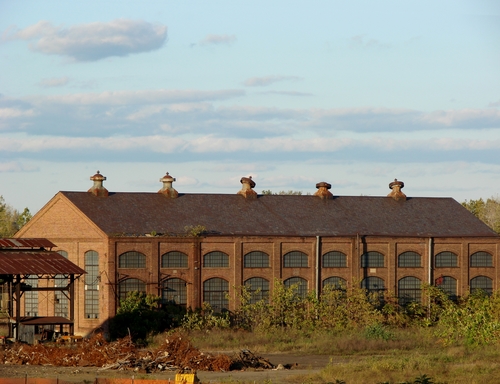Environmental Cleanups—A Changing Landscape
 |
In the United States, according to the EPA, 51 percent of the population live within three miles of one of the 156 million sites involved in cleanup under control of the Office of Solid Waste and Emergency Response (OSWER). Of these, 30% (or 91 million) are brownfields, 35% (or 106 million) are corrective actions performed under the Resource Conservation and Recovery Act (RCRA CA), and 16% (or 49 million) are Superfund sites.
These sites exist everywhere, in big urban cities and small rural towns, but one thing many have in common is that they are located within three miles of populations that are minority (44%), low income (15%) , linguistically isolated (11%), and have less than a high school education (16%). While these numbers shed light on our nation’s legacy of pollution in disadvantaged areas, recent OSWER accomplishments are turning the tide.
“Hazardous Waste Remediation: How to Clean Up Brownfields in Compliance with CERCLA & RCRA” on Thursday, October 30. Understand the different programs designed to assist in redeveloping a brownfields site; the potential pitfalls; and the federal requirements you must follow. Find out more.
For example, before a site can be remediated it has to be identified and assessed. In FY 2013 the EPA funded states and tribes to complete 367 Superfund remedial site assessments or 48% of the total Superfund assessments, including:
- Lead smelter sites—Working with states, the EPA has been evaluating 464 lead smelter sites identified in a 2001 report and work has now been performed at all of the sites with the following determinations made by the end of FY 2013:
- 88 sites require no further federal Superfund involvement,
- 11 sites need cleanup attention (and were placed on the National Priorities List (NPL) or have been referred to other state/federal cleanup programs) and
- 1 site requires further assessment work before making a final decision.
Live Webinar: Hazardous Waste Remediation
Join us on October 30 when our two presenters will bring their years of experience in brownfields redevelopment and environmental regulatory compliance to deliver an in-depth presentation on hazardous waste remediation from brownfields. Register now.
- RCRA Lean—“Lean” refers to methods by which EPA headquarters and regional offices have shortened process time frames by as much as 82% and reduced the number of process steps by more than 63%. In FY13, EPA Regions 7 and 3, partnered with Missouri, Virginia, the Association of State and Territorial Solid Waste Management Officials (ASTSWMO), industry and consultants to use Lean techniques to evaluate the RCRA Facility Investigation (RFI) phase of corrective action. The RFI process was selected because these investigations are the most time consuming and have not been revised in a significant amount of time. With the goal of eliminating non-value added activities and redundancies in the investigation phases, a Corrective Action Framework Agreement (CAFA) template was developed to serve as a guiding document clarifying the facility-specific goals and expectations for the RFI. Both Regions selected pilot facilities at which to implement a CAFA and all other Regions are in the process of doing the same. Based on preliminary estimates, the new process reduces the time required to complete an RFI by 73 percent.
- Investing in Manufacturing Communities Partnership (IMCP)—A cross-agency effort to revitalize communities and the economy by attracting new manufacturing, and for the EPA, using remediated sites in those communities seeking the new investments. Through the Brownfield Area Wide Planning (AWP) and Targeted Brownfield Assessment programs, a “preference and priority” strategy has so far identified 37 programs across 12 agencies, and helps to link funding assistance with IMCO designees.
- Increasing Efficiency and Effectiveness—EPA recently undertook the Superfund Program Review (SPR) to evaluate cleanup programs and processes in the face of “a challenging budget environment.” Five measures were established including two performance measures tracking Superfund and RCRA CA sites where human exposures are under control and two additional annual performance measures specifically assessing progress managing groundwater contamination. The fifth measure tracks Superfund RA completions measuring on-going progress and risk reduction at the project sites. In FY 2013, the EPA met or exceed all annual targets for these measures.

What ? 49 million Superfund Sites ? Be real. Wikipedia says “As of February 27, 2014, there were 1319 Superfund sites on the National Priorities List in the United States.[2] Fifty-three additional sites have been proposed for entry on the list.[2] As of February 27, 2014, 375 sites have been cleaned up and removed from the list.[2]
A member of the ctmnumioy asked a couple more questions about the Groundwater study. The questions and answers are as follows:4. Can bioremediation be used to treat the deep groundwater contamination?TA Comment: I don’t know if bioremediation could be used to treat the deep groundwater or not because the data are extremely limited. The limited data that are available don’t rule it out. 5. I’ve been reading about the environmental cleanup effectiveness and health uncertainties around nano chemical remediation. Things like molecular iron and silver applied to soil and water. Do you know if any such technologies are being examined for this project? Or should be?TA Comment: Yes, one nano-scale iron compound will be tested in the treatability study. It is in the form of an oil emulsion that is applied as an oily liquid, which may help solve some of the air-borne health problems associated with nano-scale materials. I think this nano-scale compound is a promising material because of the mechanism of how it works. The oily material feeds the bacterial growth to increase it, and the bacteria convert the nano-scale iron to highly reactive compounds that destroy the most toxic contaminants. This looks like a good theory to me. The material could greatly accelerate the natural cleanup process and seems worthy of a trial.